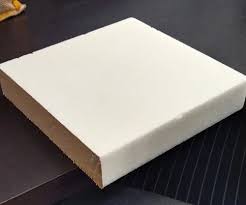
The Versatile Properties of Hard Polyurethane Foam
Hard polyurethane foam is a versatile material that finds applications across various industries due to its unique properties and characteristics. This type of foam is known for its excellent insulation capabilities, lightweight nature, and high strength-to-weight ratio.
One of the key features of hard polyurethane foam is its thermal insulation properties. It is widely used in construction for insulating walls, roofs, and floors, helping to reduce energy consumption and maintain comfortable indoor temperatures. In addition, this foam is also used in refrigeration and cold chain applications where temperature control is crucial.
Another advantage of hard polyurethane foam is its lightweight nature. Despite being lightweight, it offers exceptional structural support, making it an ideal choice for applications where weight reduction is important without compromising on strength. This makes it suitable for use in transportation industries such as automotive, aerospace, and marine.
Furthermore, hard polyurethane foam has a high strength-to-weight ratio, making it an excellent choice for structural applications that require both durability and lightness. It can be molded into various shapes and sizes to fit specific requirements, offering design flexibility to manufacturers across different sectors.
In conclusion, hard polyurethane foam stands out as a valuable material with a wide range of applications thanks to its insulation properties, lightweight nature, and high strength-to-weight ratio. Its versatility makes it a popular choice in industries ranging from construction to transportation, showcasing the importance of this innovative material in modern manufacturing processes.
5 Essential Safety Tips for Working with Hard Polyurethane Foam
- Ensure proper ventilation when working with hard polyurethane foam to avoid inhaling harmful fumes.
- Use safety equipment such as gloves and goggles to protect your skin and eyes from contact with the foam.
- Follow manufacturer’s instructions for mixing and applying the foam to achieve the desired results.
- Store hard polyurethane foam in a cool, dry place away from direct sunlight and sources of heat.
- Dispose of leftover foam properly according to local regulations to prevent environmental harm.
Ensure proper ventilation when working with hard polyurethane foam to avoid inhaling harmful fumes.
It is crucial to prioritize proper ventilation when working with hard polyurethane foam to prevent the inhalation of harmful fumes. Adequate ventilation helps to disperse any potentially hazardous gases that may be released during the application or curing process of the foam. By ensuring good airflow in the work area, individuals can safeguard their respiratory health and minimize the risk of exposure to any harmful substances that could be present in the foam’s composition. Prioritizing ventilation is a simple yet essential precautionary measure to promote a safe and healthy working environment when handling hard polyurethane foam.
Use safety equipment such as gloves and goggles to protect your skin and eyes from contact with the foam.
It is essential to prioritize safety when working with hard polyurethane foam. To protect your skin and eyes from potential contact with the foam, it is recommended to use appropriate safety equipment such as gloves and goggles. Wearing gloves can prevent direct skin exposure to the chemicals in the foam, while goggles offer protection against any splashes that could come into contact with your eyes. By taking these precautionary measures, you can ensure a safe working environment and minimize the risk of any adverse reactions when handling hard polyurethane foam.
Follow manufacturer’s instructions for mixing and applying the foam to achieve the desired results.
It is crucial to follow the manufacturer’s instructions for mixing and applying hard polyurethane foam to ensure the desired results. Proper mixing ratios and application techniques are essential for achieving optimal performance and quality in the final product. By adhering to the guidelines provided by the manufacturer, users can maximize the effectiveness of the foam, avoid potential issues such as uneven expansion or insufficient adhesion, and ultimately achieve the best possible outcomes for their specific application needs.
Store hard polyurethane foam in a cool, dry place away from direct sunlight and sources of heat.
It is recommended to store hard polyurethane foam in a cool, dry place away from direct sunlight and sources of heat to maintain its quality and performance. Exposure to high temperatures or sunlight can lead to degradation of the foam material, affecting its insulation properties and structural integrity. By storing the foam in a controlled environment, you can ensure that it remains in optimal condition for its intended applications, prolonging its lifespan and effectiveness.
Dispose of leftover foam properly according to local regulations to prevent environmental harm.
It is crucial to dispose of leftover hard polyurethane foam properly according to local regulations to prevent environmental harm. Improper disposal of foam can lead to pollution and harm ecosystems. By following the guidelines set by local authorities for the safe disposal of foam waste, we can contribute to protecting the environment and ensuring sustainable practices in our communities.
